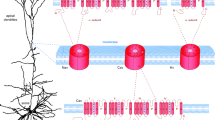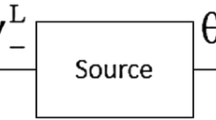Abstract
We contrast person-centered categories with “objective” categories related to physics: consciousness vs. mechanism, observer vs. observed, agency vs. event causation. semantics vs. syntax, beliefs and desires vs. dispositions. How are these two sets of categories related? This talk will discuss just one such dichotomy: consciousness vs. mechanism. Two extreme views are dualism and reductionism. An intermediate view is emergence. Here, consciousness is part of the natural order (as against dualism), but consciousness is not definable only in terms of physical mass, length, and time (as against reductionism). There are several detailed theories of emergence. One is based on the Great Chain of Being and on organic evolutionary hierarchy. The theory here is based instead on the concept of “relational holism” in quantum mechanics. The resulting brain model has two interacting systems: a computational system and a quantum system (a Bose-Einstein condensate), perhaps interacting via EEG waves. Thus, we need both person-centered and matter-centered categories to describe human beings. Some possible experimental tests are discussed.
Similar content being viewed by others
References
Cramer, J.G. (1986), ‘The transactional interpretation of quantum mechanics’,Reviews of Modern Physics 58, pp. 647–667.
Deutsch, David (1985) ‘Quantum Theory, the Clark-Turing Principle and the Universal Quantum Computer’,Proceedings of the Royal Society of London, A400, pp. 97–117.
Fanchi, J.R. (1987), ‘Entropy and Time(s)’,Physical Review A 35, pp. 4859–60.
Feynman, R.P., Leighton, R.B., and Sands, M. (1964),The Feynman Lectures on Physics, Vol. II, Chapter 2-1, Addison-Wesley: California, London, etc
Flew, A. and Vesey, G. (1987),Agency and Necessity, Blackwell: Oxford and New York.
Lockwood, M. (1989),Mind, Brain and the Quantum, Blackwell: Oxford and New York.
Marshal, I.N. (1989), ‘Consciousness and Bose-Einstein Condensates’,New Ideas in Psychology 7, pp. 73–83.
Marshall, I.N. (1996), ‘Three Kings of Thinking’, in S.R. Hamcroff, A.W. Kazniak, and A.C. Scott (eds.),Towards a Scientific Basis of Consciousness. Boston: MIT Press.
Marshall, I.N. (1995), ‘Consciousness and Quantum Phase’, Unpublished.
Nagel, T. (1979),Mortal Questions, Cambridge University Press: Cambridge.
Penrose, R. (1989),The Emperor's New Mind. Oxford, New York, Melbourne: Oxford University Press.
Redhead, M. (1987),Incompleteness, Nonlocality and Realism, Clarendon Press: Oxford.
Searle, J.R. (1980) ‘Minds, brains and programs’,Behaviourial and Brain Sciences 3, pp. 417–457.
Segal, Hanna (1964),Introduction to the Work of Melanie Klein, William Heinemann: London.
Shanon, B. (1988), ‘The semantic representation of meaning: a critique’,Psychological Bulletin 104, pp. 70–83.
Spiller, T.P. and Clark, T.D. (1986), ‘Quantum behaviour of superconducting rings’,Nature 321, p. 476.
Zohar, D. (1990).The Quantum Self. Bloomsbury: London. William Morrow: New York. Etc.
Zohar, D. and Marshall, I.N. (1993),The Quantum Society. London: Bloomsbury: New York: William Morrow.
Author information
Authors and Affiliations
Rights and permissions
About this article
Cite this article
Marshall, I.N. Some phenomenological implications of a quantum model of consciousness. Mind Mach 5, 609–620 (1995). https://doi.org/10.1007/BF00974989
Issue Date:
DOI: https://doi.org/10.1007/BF00974989




